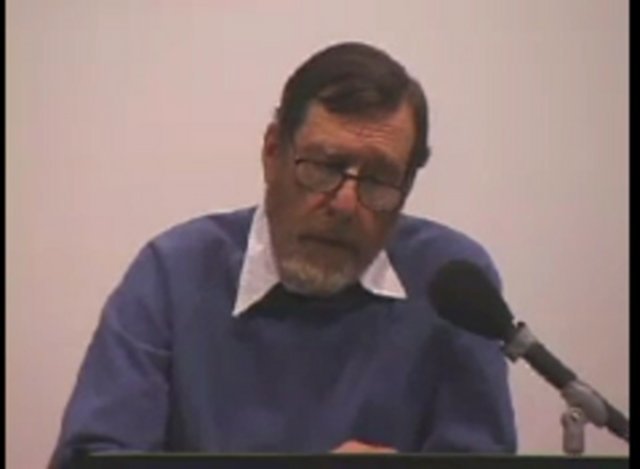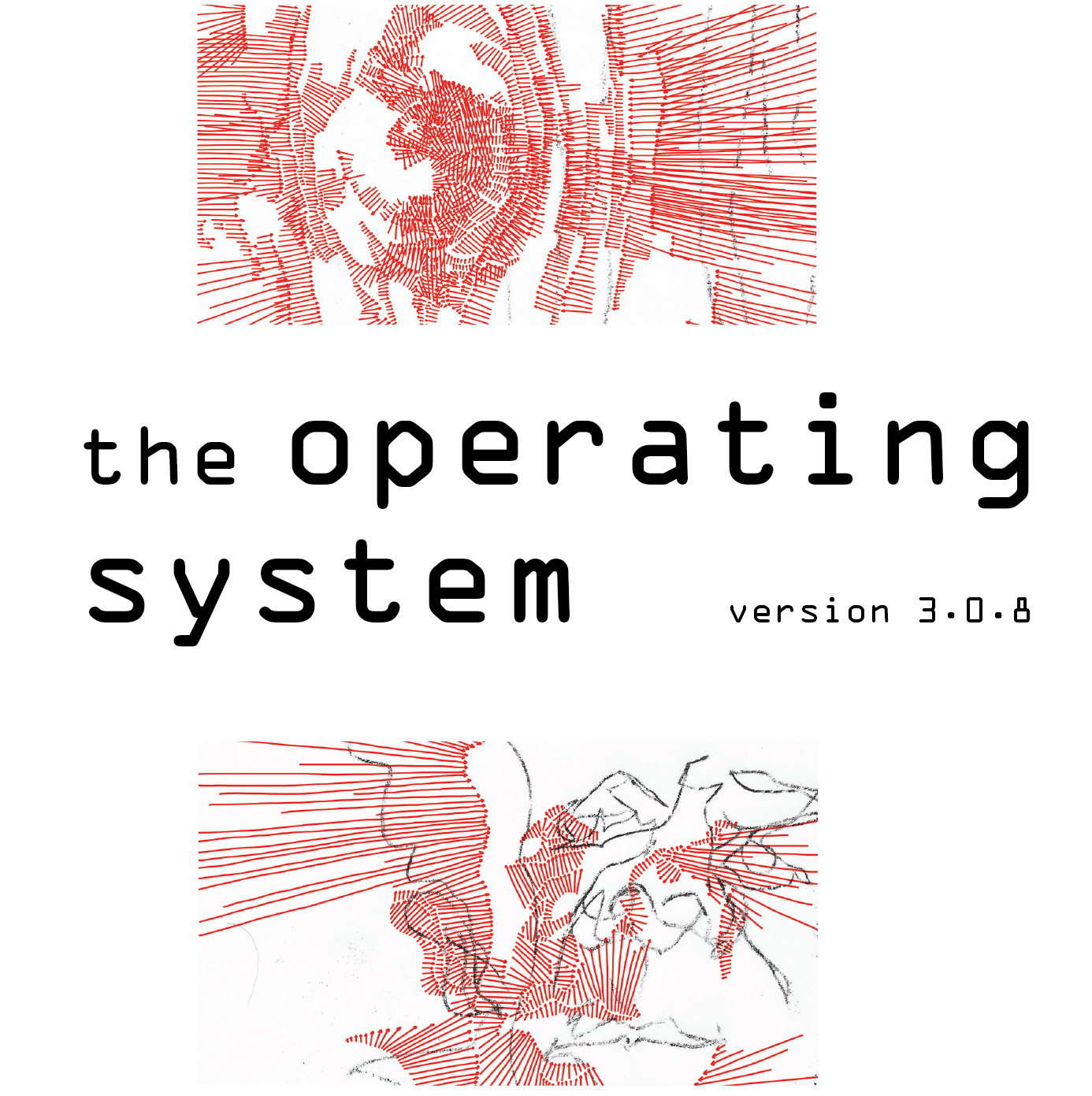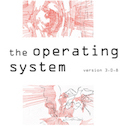3rd ANNUAL NAPOMO 30/30/30 :: DAY 28 :: BARRETT WARNER on RUSSELL EDSON's 'SHEET MUSIC'

[box]He was advancing into featherhood. At first a little eiderdown in the middle of his chest. Then some good-sized feathers coming out of his elbows.
He wondered if there had ever been a bird in the family; some untalked-about ancestor. Perhaps an ostrich or a wren…
In any case he must prepare his mind to lose his teeth for a beak, his arms for wings, his human feet for the scaly toes of a bird…
But as he was developing into a bird he took a sudden turn, and started developing into a dog with a sudden desire to bark at the moon…
It makes no sense, he thought. Becoming a bird is one thing, but to stop becoming a bird after one is almost there, and to start becoming a dog, doesn’t make any sense at all…
(from “The Man with a Sudden Desire to Bark at the Moon”)
[/box]
In spite of the glories of spoken word poets who harken back to poetry’s oral tradition—yet maybe a tradition on steroids—contemporary poetry has been slowly evolving from a spoken to a visual song. It wasn’t natural selection and there weren’t any asteroids involved, just a steady-gets-it kind of progress from Sappho to Timothy Liu.
Along comes Russell Edson to spare us the existential question, how did we get here? Edson is how we got here. First a little background on the sonic versus ocular debate.
[textwrap_image align=”left”]http://www.theoperatingsystem.org/wp-content/uploads/2014/04/EdsonTormented.jpg[/textwrap_image]When poems were chiseled on stone, mistakes were hard to fix. A poet, like a musician, might rehearse for days and days. Poems weren’t written as they were composed; they were composed, and then written down. The invention of moveable type in 1500 meant that letters did not have to be drawn or hammered anymore, and the form of a stanza began to diverge from its original oral function pertaining to Greek figures of speech and rhythm.
Hello internet! The great thing about online publications is that we can finally go back to drawing poems. Many poets and poet illustrators from Tony Barnstone to John Dermot Woods are putting the poetry graphic novel alongside other recently rediscovered subgenres such as flash fiction and the prose poem.
The old blind naked Tiresias in me who is taking a tub while Blake Butler anxiously brushes his teeth wonders if all this line shaping is the result of no one having a flair for prosody. Not sure how voice and breath break a line? Try writing all the way across the page. It even pays better. Find yourself in agony over the right word? Try sketching it with a few thought balloons for effect. If a picture is a thousand words, then it should also be at least a dozen sonnets and maybe a hundred haiku.
The result is a literature of “sustained wackiness” which imitates the absurd. Matt Cook’s delightful Proving Nothing to Anyone is a great example. Cook writes poems of perception and misperception—the heart of pictographic writing—and some have not quite rightly compared him with Jack Handy. Cook’s poems operate from only a fraction of experience. Compare this to Hemingway, who believed you had to die in order to write about death.
Since so many new poets have made their successes via the internet, and so many older poets have come out with 2.0 versions of themselves—I’m thinking here of the wonderful Bill Knott who flipped his handmade chapbooks on LuLu.com—it is tempting to attribute the move away from an oral drama towards a visual / virtual drama as having something to do with technology. But the real shift began in 1951, the year Russell Edson published his first book at the age of sixteen. Eighteen other poetry volumes have followed, as well as plays and a novel, and books of illustrated fables.
Edson now seems like a prophet and not just because he’s almost eighty. Learning of Edson and his father, who was both a cartoonist and a screenwriter, it isn’t so hard to predict the fascinating post-millennial arrival of video poet like Stephanie Barber who also combines all three forms…drama, visual symbol, language. The interesting point is that while poetry began with talkies and has evolved into silent pictures, film began with silent nickelodeon sketches and then evolved into talkies.
In the case of Edson, the apple didn’t fall far from the juicer. Edson himself is an accomplished artist and executes all of his cover art. As a poet, his chief focus is “the dark uncomfortable metaphor.” Anyone smirking along in the Alt-Lit scene should take notice: Russell Edson is your literary Godfather.
Edson writes stanzas as if they were panels in series. The space between the panels—the gutter—well there is poetry in there too.
[box]
Any number of positions…
See Jack asleep.
See Jack up and pacing.
Any number of cups raised, emptied and lowered any number of times.
See Jack drinking coffee.
Any number of brooks and fields crossed and recrossed with ever-increasing accumulation.
See Jack crossing and recrossing brooks and fields.
Any number of experiences repeated in ever-increasing numbers of times. Any number from the perpendiculars of consciousness to the horizontals of sleep.
Any number.
(from “See Jack”; cover art by Edson below right)
[/box]
[textwrap_image align=”right”]http://www.theoperatingsystem.org/wp-content/uploads/2014/04/EdsonSeeJack.jpg[/textwrap_image]Edson’s poem is not about Jack. Jack is only the evidence which proves a half-stated hypothesis about random behavior. Edson does so with a series of panels that are full of rational patterns. The premise is the hook that draws us into the poem. We know it’s “pretend” but we’re willing to go where it leads. Edson is a master at coping with objective and non-objective subjects, arranging them in neat little rows for us.
For old school poets, stanza breaks give the reader a chance to breathe, and maybe offer a small opportunity for transition. For Edson, the break is where much of the juxtaposition occurs. Thus, Edson is able to create a poem’s tension from that empty space between stanzas. If this juxtaposition, no different from Williams’ wheelbarrow or Frost’s dry-stack stone wall, is where lies the empathy, Edson’s gift is to create empathy from the blank spaces, an ultimate form of negative capability.
[box]
I create a spaceship and lift off through the warm haze of a summer evening.
The sky just beginning to darken in the east…
I am now far enough away to see the earth as a bluish ball slightly deformed by shadow. The earth, my home, is very beautiful. I think of mountains and oceans; clouds that move over great cities inventing elephants and whales in the sky…
Suddenly a small dwarf crawls out from under the control panel, holding an ice pick.
There’s no ice on board, and I wonder why he has an ice pick.
(from “Space Journey”)
[/box]
[textwrap_image align=”left”]http://www.theoperatingsystem.org/wp-content/uploads/2014/04/tumblr_lw8zq7iB4n1qlvodzo1_500.png-e1398722986870.jpeg[/textwrap_image]Russell Edson has been writing poems as a series of imagistic blocks for sixty five years. The generation of poets who came up with him, which included Jack Gilbert, was like every generation I guess. Most poets have a ten year stride, with one foot in the time zone of their last teacher, and another foot in the short term future. That was Gilbert. One foot in 1955, one foot in 1965. Edson’s stride is much bigger than that, and he’s always had both feet planted in the next century. One of my favorite Edson poems is his “Margaret’s Book” which I admire for the way he manages memory and desire—poetry’s oldest friends—in a cartoon of a poem.
[box]
An old man had a mouse for a daughter. Her eyes were like drops of ink; her ears, soft little petals…
He called her Margaret.
Then he lost Margaret while teaching her to dance.
Oops, he sighed, as he felt the little body under the sole of his shoe. He picked her up by the tail, and pressed her in a book.
Sometimes he would open Margaret’s book and see how like a flower she was. Her tail a flower’s stem. Her ears, gray little petals lined with the mystery of pink desire…
[/box]
[line]
[box]
Motion Detector
Staring at the motion detector
I try not to blink.
We play this game twenty times
a night, two bucks a match.
The motion detector is rich,
it has never lost, and winning,
it throws a harsh light
that blinds my skull.
I wish we played for love,
Or that losing could be winning,
And my fears of touching you
Could dissolve like salt.
The upside of so much failure:
I can stare a long time without thinking
,
or making plans, or remembering-
all things which make me twitch.
One night, I bet a whole fifty.
Luck has a way of bubbling up
at the trickiest moments.
Of course, I blinked. It was over.
Goodnight Sara, I said,
into the white blinding star.
Goodnight, she said, mirroring me.
– originally published at Lines + Stars
[/box]
[line]
Barrett Warner is an associate editor at Free State Review. His work was featured previously in this year’s series in this outstanding piece on WWII poet Keith Douglas, and we are ever so grateful that he was able to pinch hit for us with this piece on Edson when one of our final contributors went MIA. Shit happens! (And more often than not, serves as fertilizer. Huzzah!)
Note: Editorial gratitude to the University of Pittsburgh Press for providing hard to find files of illustrations to accompany this piece on Edson’s work. Stars in your crown, Maria!


